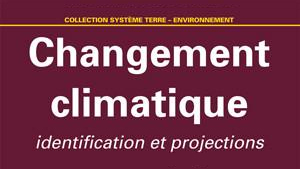Stating that almost every climatic study relies on knowledge-based models, subject to uncertainties and polemics about numerous coefficient values, Professor Philippe de Larminat decided to explore this domain with conventional methods for dynamic systems identification.
His last book, titled “Changement climatique – identification et projections” (2014, ISTE Editions) is a concrete application of automatic control methods and contributes to a better understanding of climate changes.
The author based his study on historical data (raw data and reconstructions) from several sources so as to instigate the identification of a climate change model and assimilate it to a “grey box” without bias on coefficient values.
The book shows a well-organised approach of an automation expert modelling a dynamic system thanks to actual records:
- collect data (model’s input and output)
- preprocessing data for the purpose of identification through algorithms
- choice of the model structure (that is why we talk about “grey box” instead of “black box” where structure is determined by an algorithm)
- choice of identification method
- critical analysis of results
- test models to predict system behavior according to new scenarios
To confront his results with IPCC (Intergovernmental Panel on Climate Change), special attention was paid to confidence interval calculation. In this case, confidence intervals only depend on statistical considerations and input data. Those raised by IPCC are mostly based on appreciation and expert consortiums. The comparative study highlights some differences, in particular with the actual role of human activity on climate change.
Models built with identification are then used to predict future temperature evolution. Identified models are more reliable than IPCC‘s models, and support the idea that human activity might have a less important impact than what the IPCC announced.
Besides methodological interest, this work may call into question some scientific hypothesis (and conclusions) about climate. Then, Professor de Larminat thought it might be helpful to make all of his work public, so he published online every piece of data and his Matlab programs to ascertain the results. The author asks his readers to participate and send remarks and critical analysis of his study, and reformulate the calculation if required.

